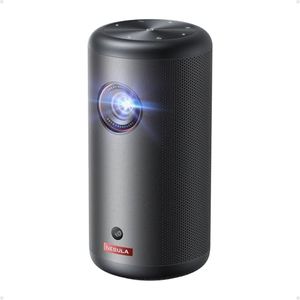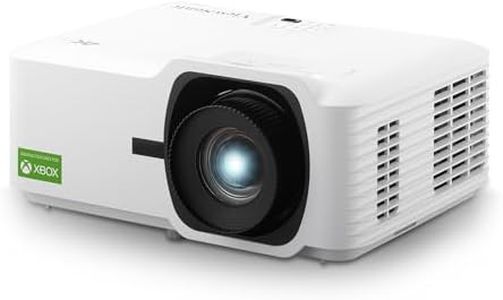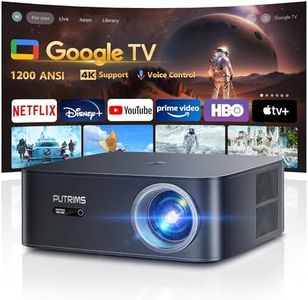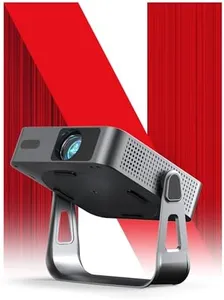We Use CookiesWe use cookies to enhance the security, performance,
functionality and for analytical and promotional activities. By continuing to browse this site you
are agreeing to our privacy policy
10 Best Home Projectors
From leading brands and best sellers available on the web.Buying Guide for the Best Home Projectors
Choosing a home projector can really enhance your movie nights, sports viewing, or even gaming experience. The key is to pick one that matches your room size, lighting conditions, and the way you plan to use it. Start by considering where you'll use the projector most often and what you'll watch — do you want cinema-like movies, sport events with friends, or just casual streaming? Understanding your environment and habits will help you make sense of the different specs available, so you can identify what's essential for you and what you can compromise on.Brightness (Lumens)Brightness, measured in lumens, tells you how much light a projector can output. This spec is important because it determines how visible your image will be, especially in rooms that aren’t fully dark. Projectors under 2000 lumens are ideal for dark, dedicated home cinema rooms, while 2000-3000 lumens work well for moderately lit spaces. If you expect to use the projector with some lights on or ambient light from windows, aim for 3000 lumens or higher. Choose a brightness level based on your room’s typical lighting—darker rooms need less, brighter rooms need more.
ResolutionResolution means how many pixels a projector can display, affecting image sharpness and detail. Common resolutions include 720p (HD), 1080p (Full HD), and 4K (Ultra HD). 720p can work for casual viewing or kid’s spaces, while 1080p is a solid choice for most users who want crisp movies and shows. If you’re looking for the best picture quality, especially on a large screen, 4K is great but only necessary if you’re sensitive to detail or plan on a big home cinema setup. Consider your content and screen size to decide what’s best—bigger screens and high-quality video deserve higher resolution.
Contrast RatioContrast ratio is the difference between the darkest black and the brightest white a projector can display. A higher contrast ratio means deeper blacks and more vibrant colors, making images ‘pop’. Lower contrast ratios (around 1,000:1) are basic, while around 10,000:1 or higher provide richer cinematic experiences. In a dedicated dark home theater, high contrast is more noticeable and desirable. If you’ll mostly use your projector in average-lit rooms, extremely high contrast becomes less critical, but still adds to overall picture quality.
Throw Distance and ZoomThrow distance is how far the projector needs to be from your screen to get a certain image size. Short-throw projectors can create big images from close up—great for small rooms—while standard projectors need to be further away. Some projectors also have zoom, letting you adjust picture size without moving the device. Measure your space first! If you have limited space, look for short-throw models. If flexibility is important (like moving the projector between places), a good zoom range makes life easier.
Keystone Correction and Lens ShiftThese features help you adjust the image if your projector isn’t perfectly lined up with the screen. Keystone correction lets you correct a trapezoid-shaped image caused by angling the projector, while lens shift allows you to move the image vertically or horizontally without distortion. If your setup won’t always be perfectly central or level, having these adjustments is extremely useful for getting a straight, square image with minimal effort.
Input Options and ConnectivityThis spec tells you what types of devices you can connect to your projector, like laptops, streaming sticks, game consoles, or sound systems. Standard inputs include HDMI and USB, but some projectors also offer wireless connections for more convenience. Make sure the projector matches the devices you want to use—if you plan to connect several devices or stream directly, check for multiple HDMI ports or built-in Wi-Fi/Bluetooth for wireless streaming.
Lamp LifeLamp life tells you how long the projector’s light source will last before it dims or needs replacement, often measured in hours. Lower numbers (3,000-5,000 hours) mean more frequent maintenance, while higher numbers (over 10,000 hours) mean you can use the projector for years with minimal worry. If you're a heavy user or plan to use your projector often, aim for a longer lamp life to avoid hassle and extra costs over time.
Built-in SpeakersSome projectors come with built-in speakers, making them easier to set up quickly, but these speakers are usually basic. If easy setup matters and you aren’t too picky about sound, built-in audio is fine. For a true movie or gaming experience, though, plan to connect to a better external sound system. Decide how much audio quality matters to you and whether you’re willing to add extra equipment.

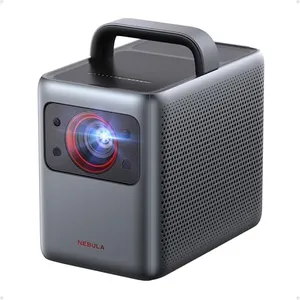
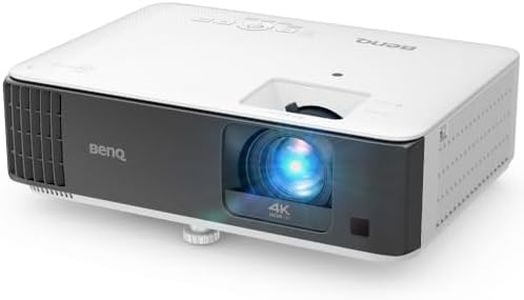

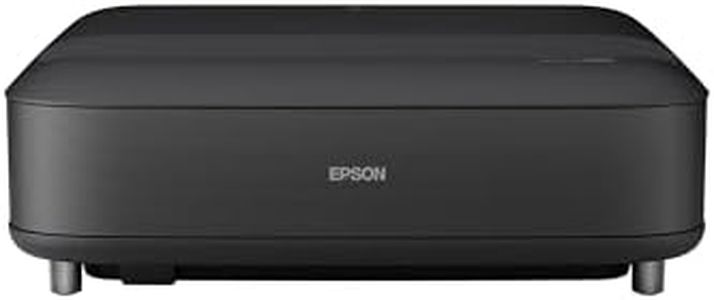

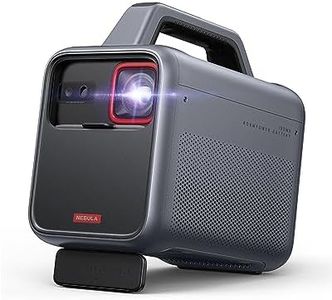
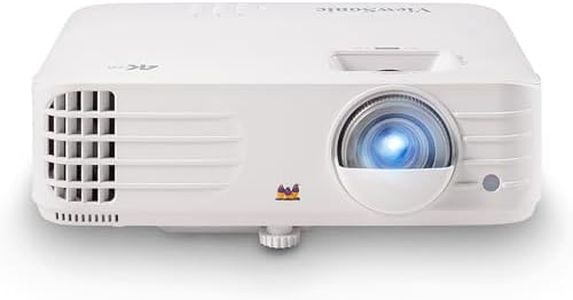
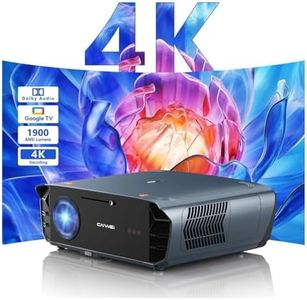
![[Netflix Official & Electric Focus] 2025 Upgraded XuanPad Mini Projector with WiFi and Bluetooth, Full HD 1080P, Auto Keystone, 210° Rotatable Stand, Smart Portable Projector for Phone](https://images-proxy.bestreviews.guide/rZ_kcYN1CVp6SJQRxPBDlgeZ28c=/0x300/https://m.media-amazon.com/images/I/516R9wCqYJL._AC_CX679_.jpg)
